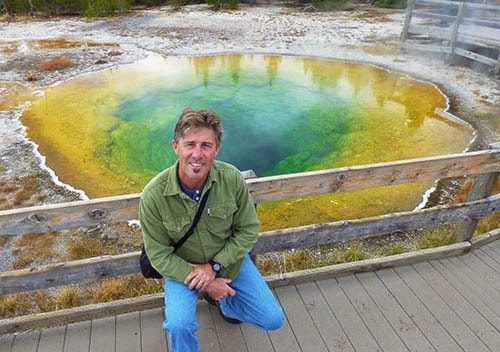In my 55 years of living and breathing on this planet, I have never seen a more beautiful place than Yellowstone National Park.
It might have something to do with it being the zenith of all things that I love – wildlife, pristine forests and geological features that boggle the mind – but somehow I inherently know that it is more than the sum of all these things.
It is the hope that such a place can still exist here, despite the human race, which subjugates all it encounters.
Here, we don’t matter, except as casual tourists – visitors to a world to which we definitely don’t belong.
Then it dawned on me, maybe Yellowstone is the solution for all that ails the earth – the pollution, the global warming, the wasting of valuable resources for such ephemeral things as this season’s fashions, the latest cell phone, convenient food packaging; a place where nature takes precedence and rules as she has for millennia, the results of which are absolutely stunning.
My wife and I just came back from a short vacation in Yellowstone and, I have to admit, the lessons I learned in a few short days will last me a lifetime.
This was the first national park created in the world, and established back in 1872 by Ulysses S. Grant, with some 2.2 million acres of land shared between Idaho, Montana and Wyoming.
Despite the bison being rendered extinct in the rest of the continental United States, here some 23 individuals managed to hide in Yellowstone’s Pelican Valley.
In 1902, 21 captive animals were added to this meagre number and managed as livestock in the Lamar Valley, eventually becoming part of a wild herd that is currently just under 5,000 strong.
The devastating forest fires of 1988 failed to mar its pristine beauty, despite scorching more than 30 per cent of the forests.
Today these young woodlands are thriving with juvenile trees.
Past mistakes of allowing tourists to walk right up to the spout of the Old Faithful Geyser and park their cars mere yards away have been replaced by strict boardwalk access and parking lots located at a safe distance from these sensitive thermal areas.
In fact, most of the hikes to the geysers, pools and mud volcanoes come without the expected amenities of washrooms and garbage disposal, while the local wildlife is left to enjoy the facilities (they often congregate to these warm thermal features in colder weather) as they please, much as they have for thousands of years.
The roads are few and far between, and narrow, with buses and RVs restricted in many of the parkways, such as Fire Lake.
In essence, Yellowstone’s success can be directly attributed to limiting human access and allowing nature to run its own course. This balance is rarely seen outside park boundaries simply because the human race is incapable of prioritizing anything that inhibits our comfort – the results of which are evident in melting polar ice, dying coral reefs and endangered animal species.
In our few days here, Pauline and I saw hundreds of bison (we had to stop three times for the herds crossing the road), elk, pronghorn antelope, black bear, bighorn sheep and mule deer, roaming without fear of human contact.
There were no manicured gardens to be seen, instead one could enjoy the golden autumn hues of trembling aspen and the blazing red hips of the wild roses.
Geysers spewed, mud pots bubbled and azure pools smoked in the cool morning air just as they had done for millennia, and I wouldn’t have it any other way.
Mike Lascelle is a local nursery manager and gardening author (hebe_acer@hotmail.com).
